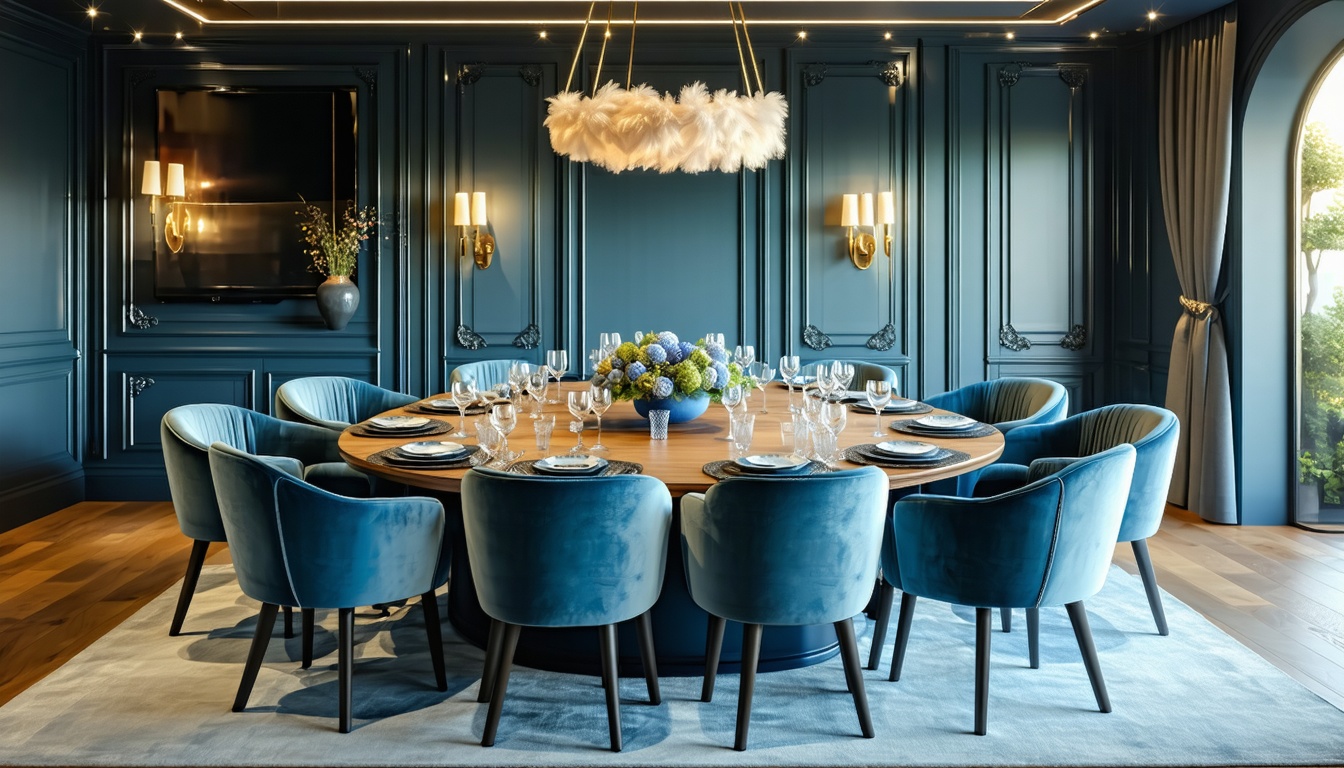European Demand Trends
As the dining room furniture scene changes in Europe, getting a handle on what’s hot is a must for buyers and online platforms. Folks are buzzing about customisation and speedy deliveries – these are now major magnets for customers.
Customisation Options
European shoppers are swooning over made-to-order dining room furniture. They’re after pieces that fit their personal groove. Companies like Artisan Furniture have caught onto this, giving customers the chance to tweak their furniture – think different colours, fabrics, styles, and sizes. People love having furniture that feels like them and blends with their life.
Shoppers are increasingly turning away from cookie-cutter furniture, wanting something that suits their exact taste. This has nudged brands to make bespoke options a regular thing. Retail buyers should jump on this trend to grab a slice of the pie.
| Customisation Feature | Interest (%) |
|---|---|
| Finish | 65 |
| Fabric | 55 |
| Design | 70 |
| Size | 60 |
Quick Delivery Services
Online shopping’s speedy delivery has hooked European consumers. Stores that can zip products to doorsteps are winning fans who love things done fast. Take Artisan Furniture, for example – they’re wowing customers with free, rapid delivery thanks to their dropshipping, aiming for a 3-5 working day window.
Getting stuff to buyers pronto boosts satisfaction and sets a company apart in the crowded market. Retailers should team up with suppliers who can keep up with the fast pace, giving patrons the swift service they’ve come to expect.
| Delivery Time | Preference (%) |
|---|---|
| 1-3 days | 40 |
| 4-6 days | 30 |
| 7+ days | 10 |
Offering custom furniture and lightning-fast delivery can make retailers a big hit in the European dining furniture market. Keeping tabs on dining room furniture trends in Europe and tweaking what’s on offer to match what consumers want is key to staying ahead.
Popular Dining Styles
Dining room furniture in Europe comes in a variety of styles, mixing the old-school charm with today’s sleek looks. Two big hitters in this scene are the classic traditional look and the simple minimalist vibe.
Traditional Designs
Traditional dining room furniture is like a window to the past, built with hearty materials and a touch of class. Think of stuff packed with details and fancy finishes. This appeals to folks who love the feel of well-made furniture and have a soft spot for yesteryears’ charm in their homes.
Traditional pieces stay in style because they bring that forever kind of elegance. People want stuff in their dining areas that not only grabs attention but also works well. Buyers can check out solid wood pieces, elegant chairs, and functional sideboards that double up as both decor and utility items. Curious? Have a gander at our piece on traditional dining room furniture Europe.
| What’s Cool? | What’s It About? |
|---|---|
| Made Of | Solid wood, top-notch veneers |
| Looks Like | Fancy, detailed handiwork |
| Draws You In With | That timeless classy feel |
| Best Bits | Curved tables, plush chairs |
Minimalist Trends
On the flip side, minimalist furniture is all about keeping it simple and useful. Especially hot in cities where space is tight, minimalist styles favour straight lines, basic colours, and pieces that do double duty. It’s a hit with folks who dig a neat, modern touch without the clutter.
This furniture often involves metal and glass, paired with slick wood styles. Minimalism is about calm and order, making it fit right in with today’s busy life. Buyers on this wavelength should look for options that keep it straightforward yet chic. Want to know more? See our take on contemporary dining room furniture trends Europe.
| What’s Cool? | What’s It About? |
|---|---|
| Made Of | Metal, glass, smooth wood |
| Looks Like | Simple lines, smart designs |
| Draws You In With | The pure modern touch |
| Best Bits | Tables that extend, stackable chairs |
The tug-of-war between traditional and minimalist styles in dining room furniture shows the never-ending love for old-school chic and the current lean toward simple living spaces (Artisan Furniture). Buyers should keep these different vibes in mind to really hit the mark in Europe’s ever-changing market scene.
Material Preferences
In the furniture game, especially when we’re talking about made-to-order dining room furniture in the UK, knowing what materials are hot right now is super important for those doing the buying. Folks in Europe have their picks when it comes to wood looks and upholstery, and these choices shape how retailers get their stuff.
Wood Finishes
Wood finishes are like the cherry on top of dining furniture—they make them look good and last longer, too. Shoppers have their faves that fit in with the vibe of their homes. Check out what’s trending:
| Wood Finish | Good Points | Popularity (%) |
|---|---|---|
| Oak | Tough as nails, classic grain | 35 |
| Walnut | Deep hues, looks classy | 25 |
| Maple | Light, goes with anything | 20 |
| Pine | Budget-friendly, rustic charm | 15 |
| Cherry | Warm glow, gets better with age | 5 |
Retailers should keep an eye on what’s hot in wood finishes while choosing their stock. Oak and walnut are big hits thanks to their timeless style and sturdiness. Hungry for more on what shoppers want? Swing by our piece on dining room furniture consumer taste in the UK.
Upholstery Choices
Upholstery is a big deal for dining furniture, too. The right fabric can totally change the vibe of the space. Retail buyers gotta know the go-to materials:
| Upholstery Material | The Upside | Popularity (%) |
|---|---|---|
| Leather | Fancy, easy to wipe down | 30 |
| Velvet | Soft, a touch of elegance | 25 |
| Linen | Breathes well, laid-back feel | 20 |
| Cotton | Won’t break the bank, loads of patterns and shades | 15 |
| Synthetic Fabrics | Tough, stain-fighter, easy on the wallet | 10 |
Leather and velvet get lots of love for their plush feel and how simple they are to keep nice. With everyone jumping on the eco-friendly train, synthetic and green fabrics are getting more attention, too. Want the full scoop? Dive into our guide on dining room furniture material trends in Europe.
By keeping tabs on what’s trending in wood finishes and upholstery picks, buyers can stock up on what’s flying off the shelves with European consumers today.
Pricing Insights
Grasping pricing is key for retail buyers and online platforms trying to sharpen their sourcing game for dining room furniture in the UK. We peek into what’s buzzing in mid-range and luxury, giving you a look at what European folks might fancy.
Mid-Range Options
In this space, you’ve got a sweet spot where style and quality meet a price that won’t have you eating instant noodles for a month. A wide range of folks are eyeing this lot to snag furniture that’s more than just a pretty face—it lasts, too.
| Item Type | Price Range (£) |
|---|---|
| Dining Tables | 300 – 800 |
| Chairs | 100 – 300 |
| Sideboards | 250 – 700 |
| Buffets | 300 – 900 |
If you’re dealing in affordable dining room furniture in Europe, keep that quality high and those prices sharp. As more people are on the lookout for stylish and sturdy pieces, diving into this mid-range pool lets you cater to their desires without burning a hole in their wallets.
Luxury Segment
Here, we’re talking about the high-rollers—those who crave top-notch quality, custom touches, and designs that stand out. These buyers are game to splash out on bespoke items that turn their dining rooms into showrooms.
| Item Type | Price Range (£) |
|---|---|
| Designer Dining Tables | 1,000 – 4,000 |
| Premium Chairs | 500 – 1,500 |
| Custom Sideboards | 700 – 2,500 |
| Luxury Buffets | 1,000 – 3,500 |
Take Artisan Furniture, for example. They offer custom options out the wazoo—think finishes, fabrics, and sizes to tailor your pieces just right (Artisan Furniture). This level of detail not only ups the value but syncs perfectly with trends towards unique home vibes.
Getting a handle on these price ranges helps retail buyers make savvy decisions, making sure they check all the boxes for European tastes in bespoke dining furniture. For more nitty-gritty on market trends, have a gander at our take on the European dining room furniture market.
Sourcing Strategies
Figuring out how to get the right bespoke dining room furniture without breaking a sweat is what retail buyers aim for in the UK. Two tricks up their sleeve include dropshipping perks and flexible order numbers, both important for keeping up with what’s hot and what people want these days.
Dropshipping Benefits
Dropshipping’s like a magic word for those in the dining room furniture game. Why? For starters, you don’t have to have a warehouse full of chairs and tables gathering dust. Sellers can put items up for sale without actually having them on hand, which means more cash in the pocket and less risk of ending up with stuff nobody wants.
Take Artisan Furniture, for instance. They let you dive into dropshipping with no strings attached—or more precisely, no minimum order demands. They even throw in free delivery, getting their handcrafted goodies to folks in a nifty 3-5 days (Artisan Furniture). That kind of swift shipping is a dream for shops eager to keep up with what buyers want without inventory headaches.
| Dropshipping Perks | What They Do for You |
|---|---|
| Order What You Want | Grab as little or as much stock as needed. |
| Bye-Bye Stock Costs | Save on warehouse space and handling. |
| Speedy Shipping | Faster delivery times mean happier customers. |
| Endless Options | Sell a variety without the need to keep stock. |
Order Quantity Flexibility
That ability to switch up how much you order is another ace in the hole. Retailers can pivot their buys to match what folks are asking for, helping them stay in tune with the latest styles and consumer cravings.
This trick not only lets shops play around with different looks and materials, but it’s great for bringing out new lines or seasonal bits without ending up knee-deep in unsold stuff. For folks in the game of custom dining furniture, this is golden. It’s also a clever way to keep the books balanced, matching buys to foreseen sales.
Retailers are wise to keep an eye on what’s trending in terms of dining room furniture trends in Europe and what buyers are into, ensuring their sourcing plans stay sharp and competitive.


